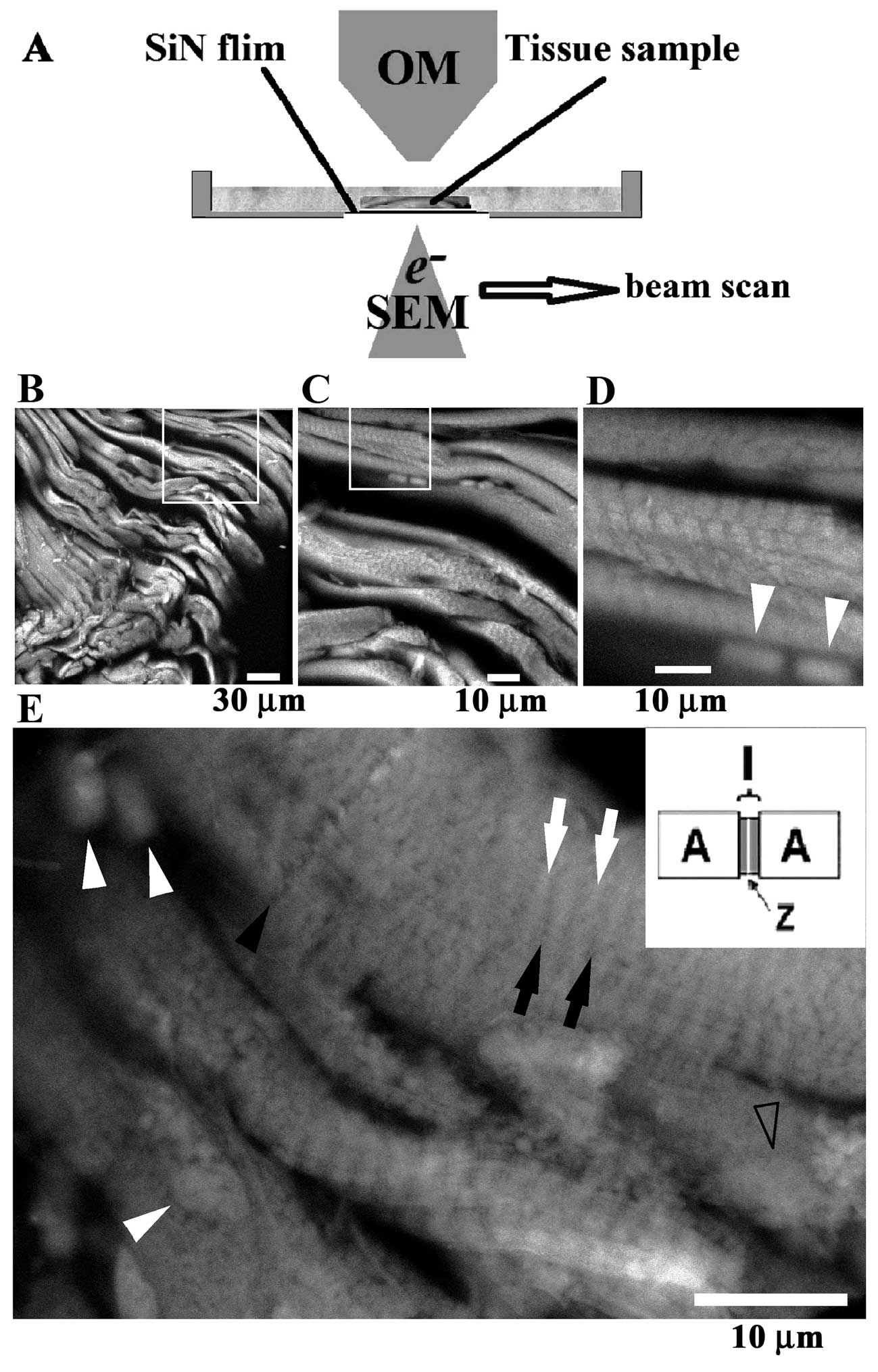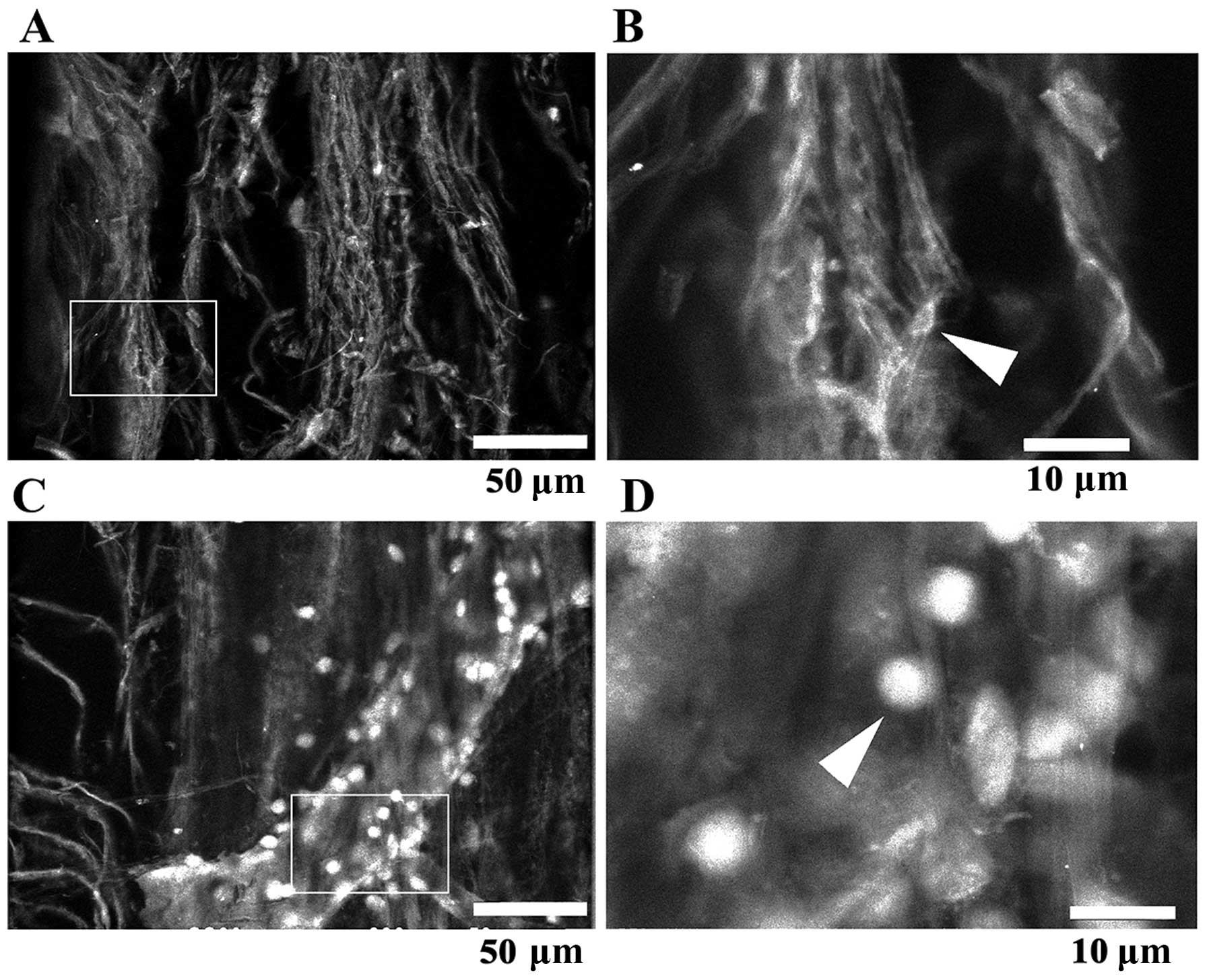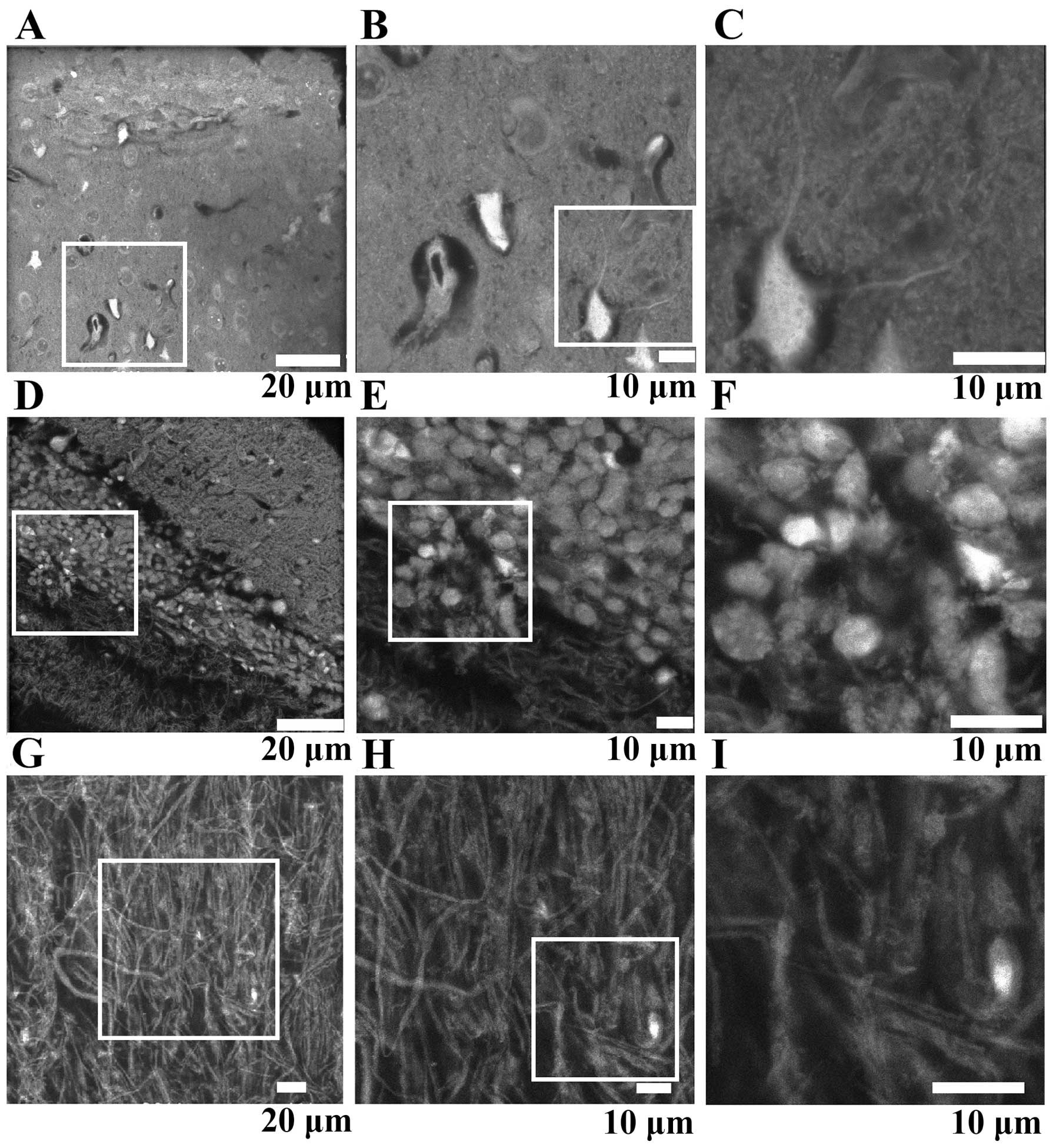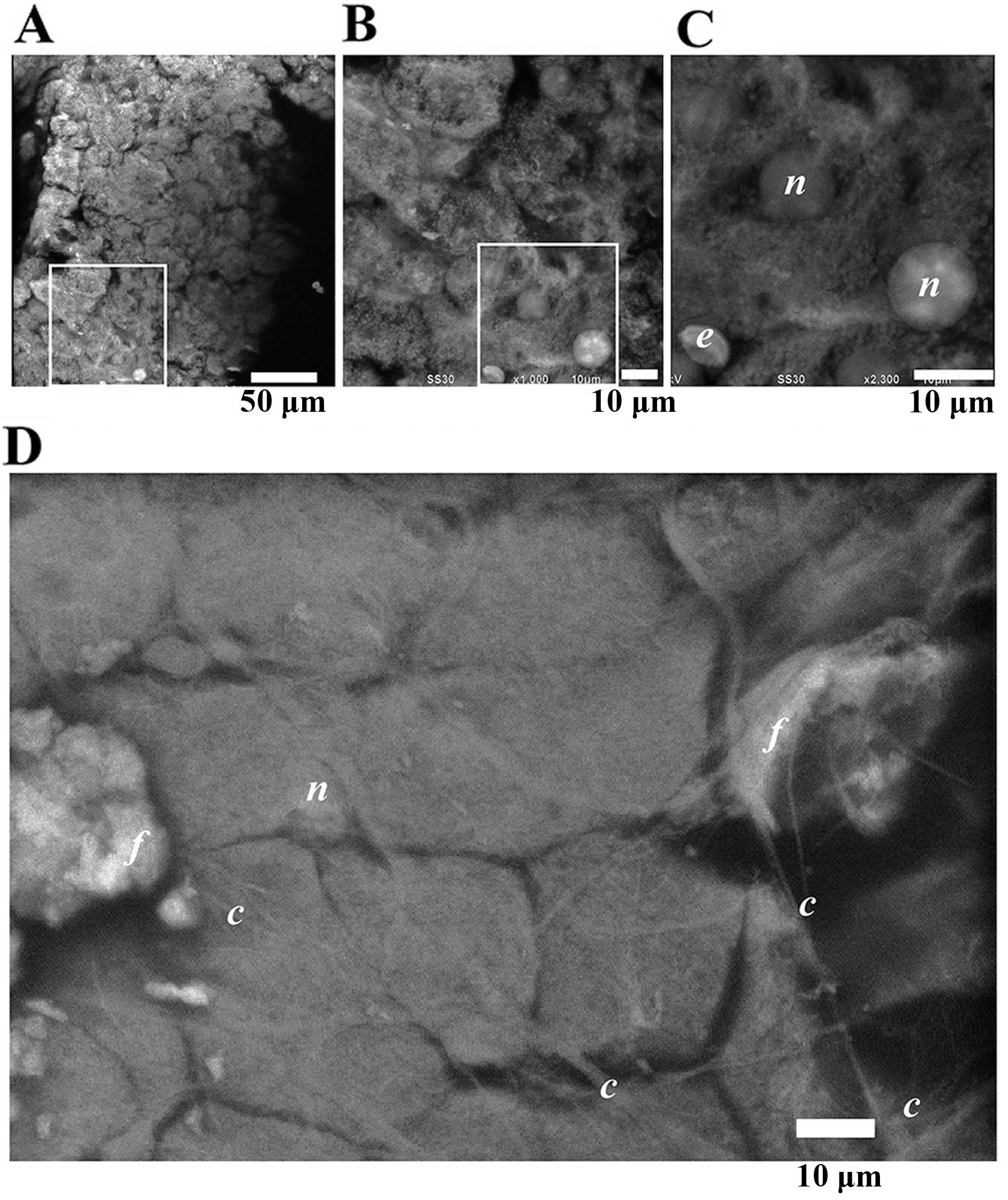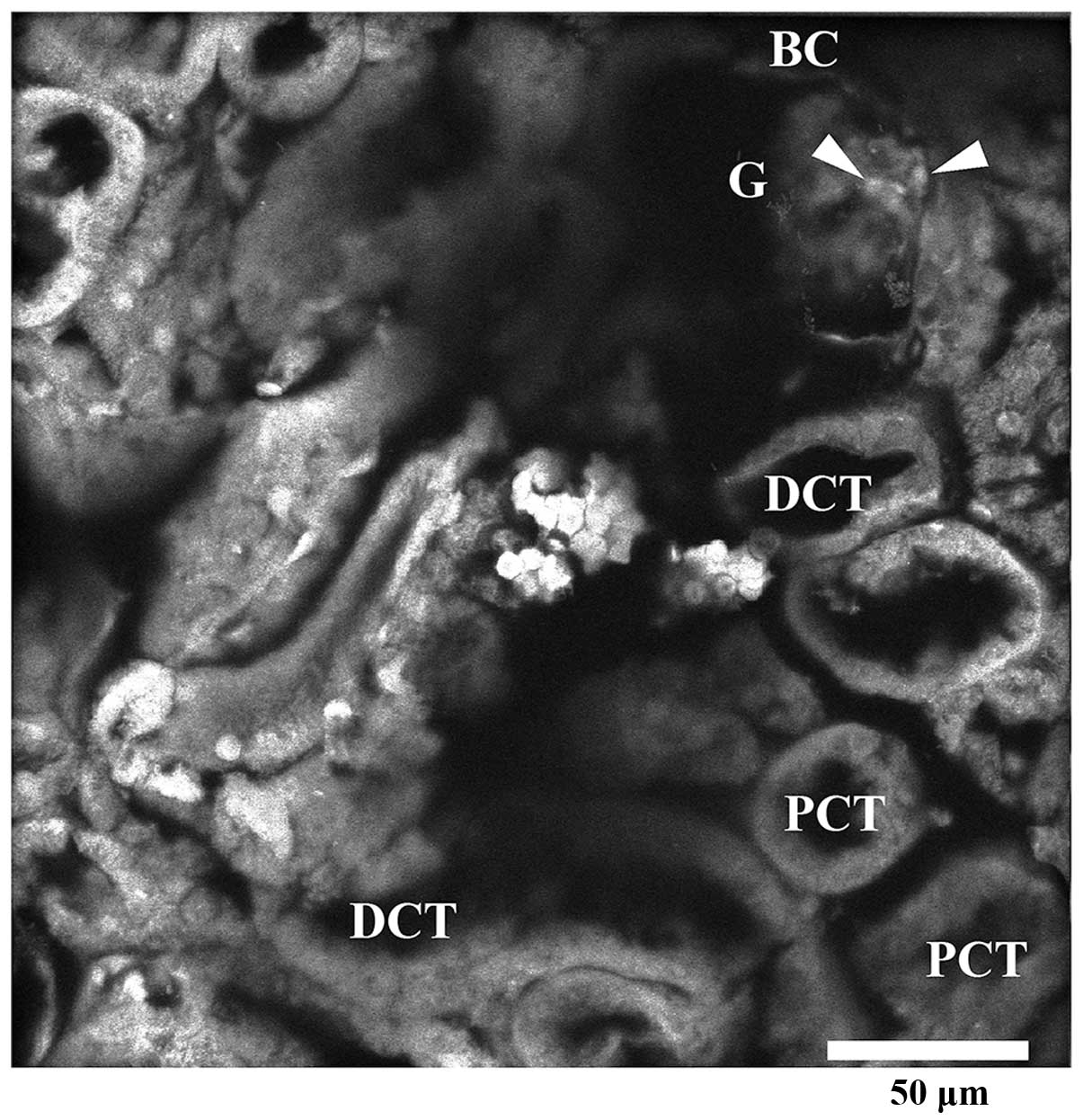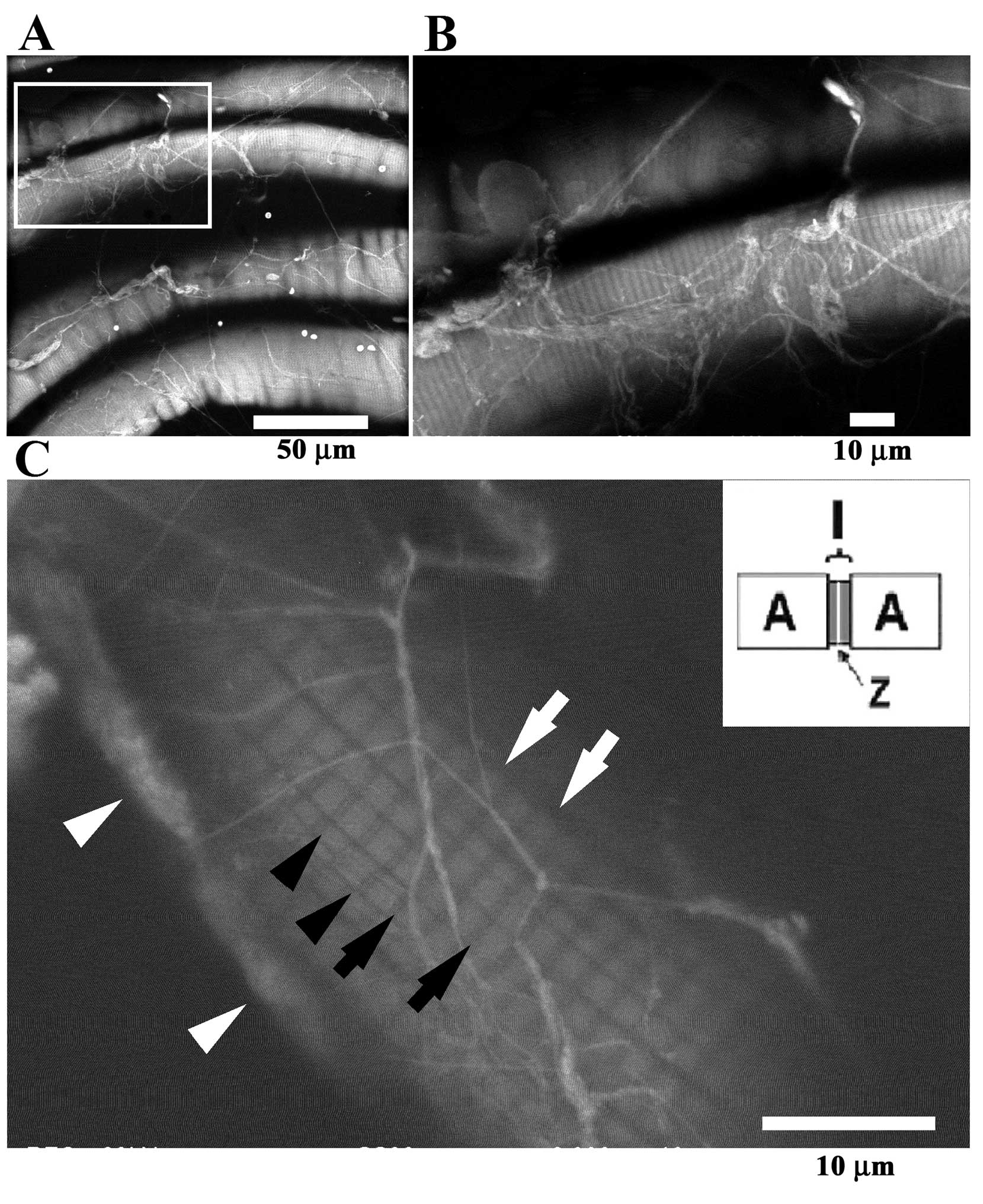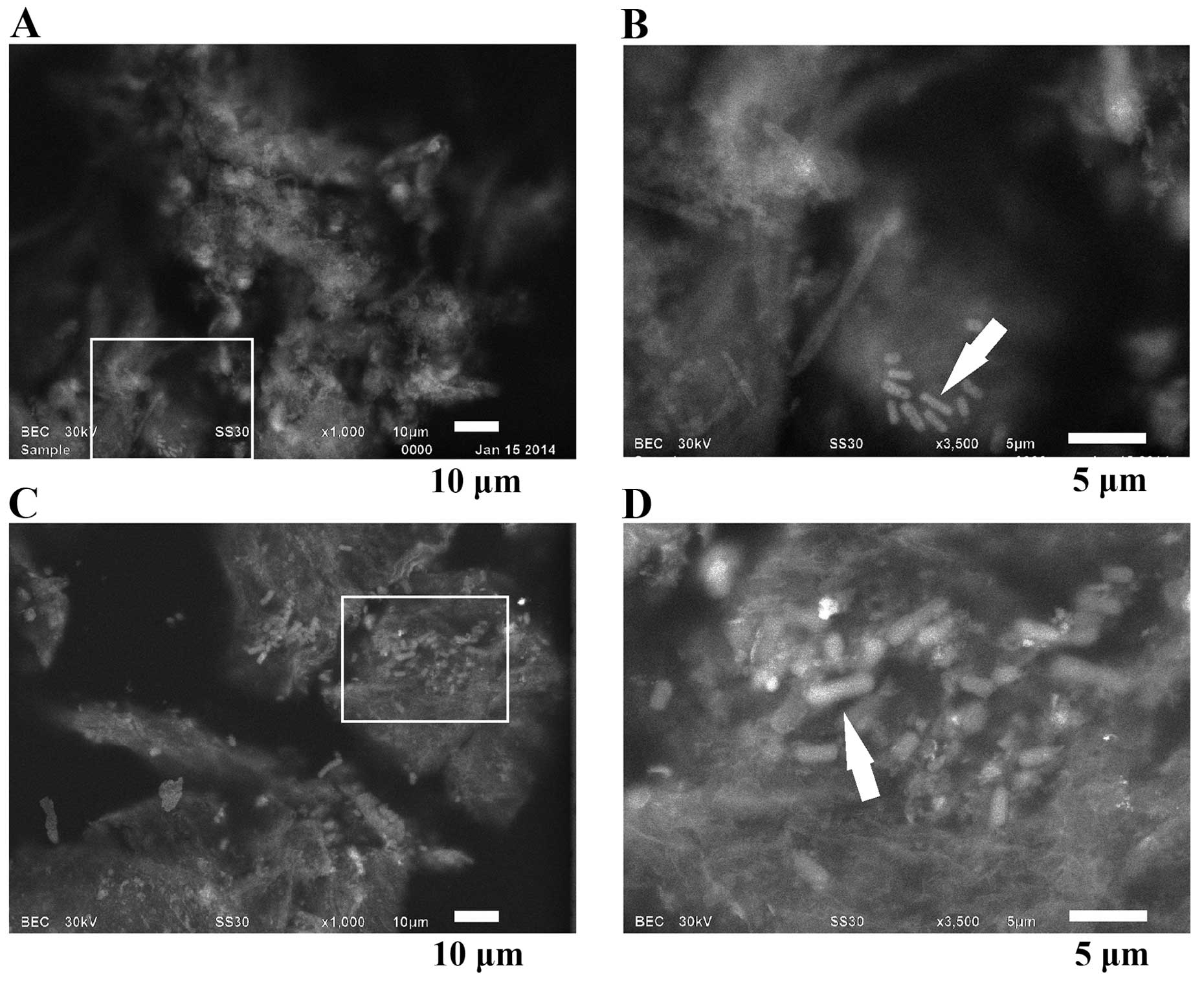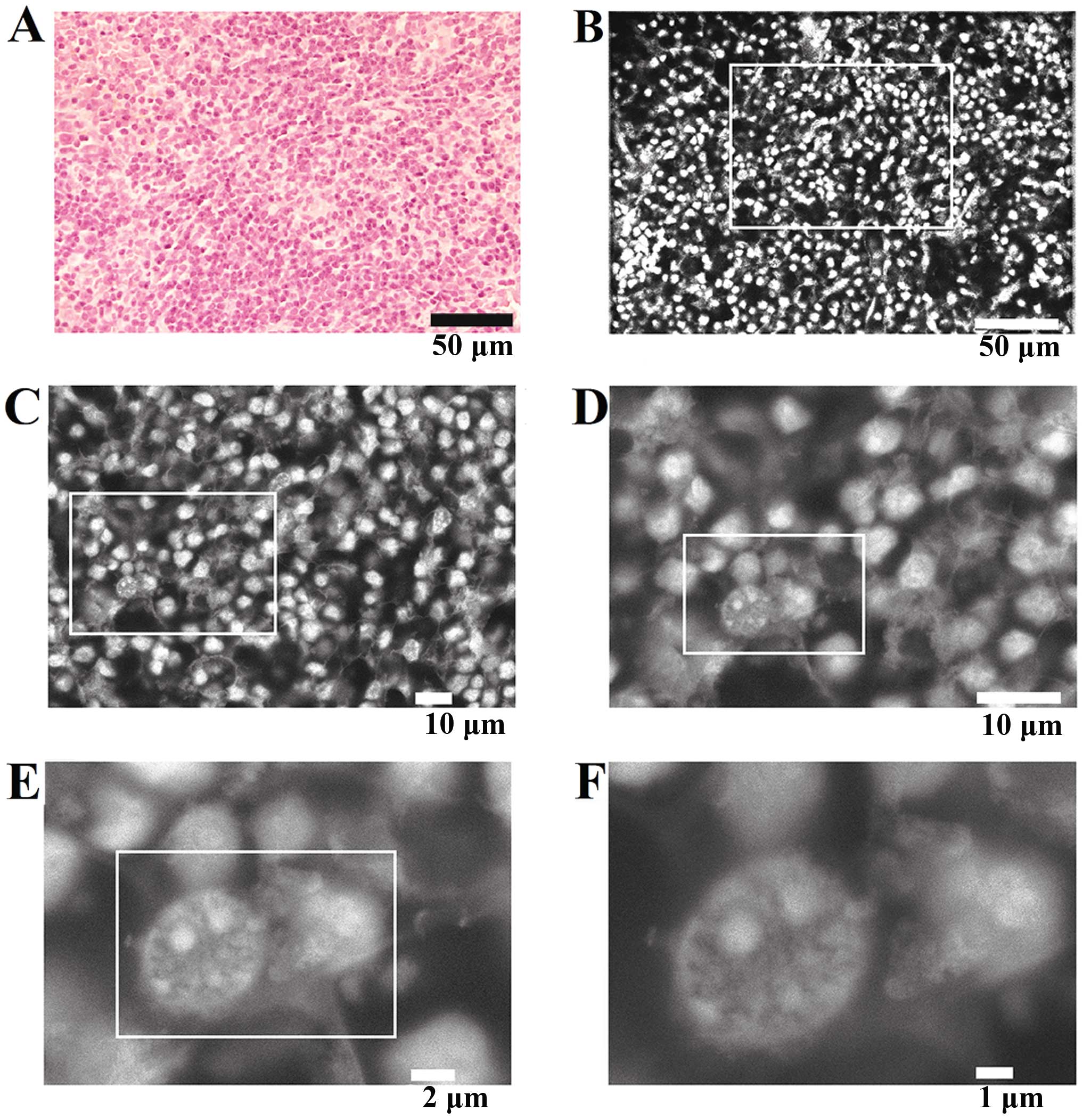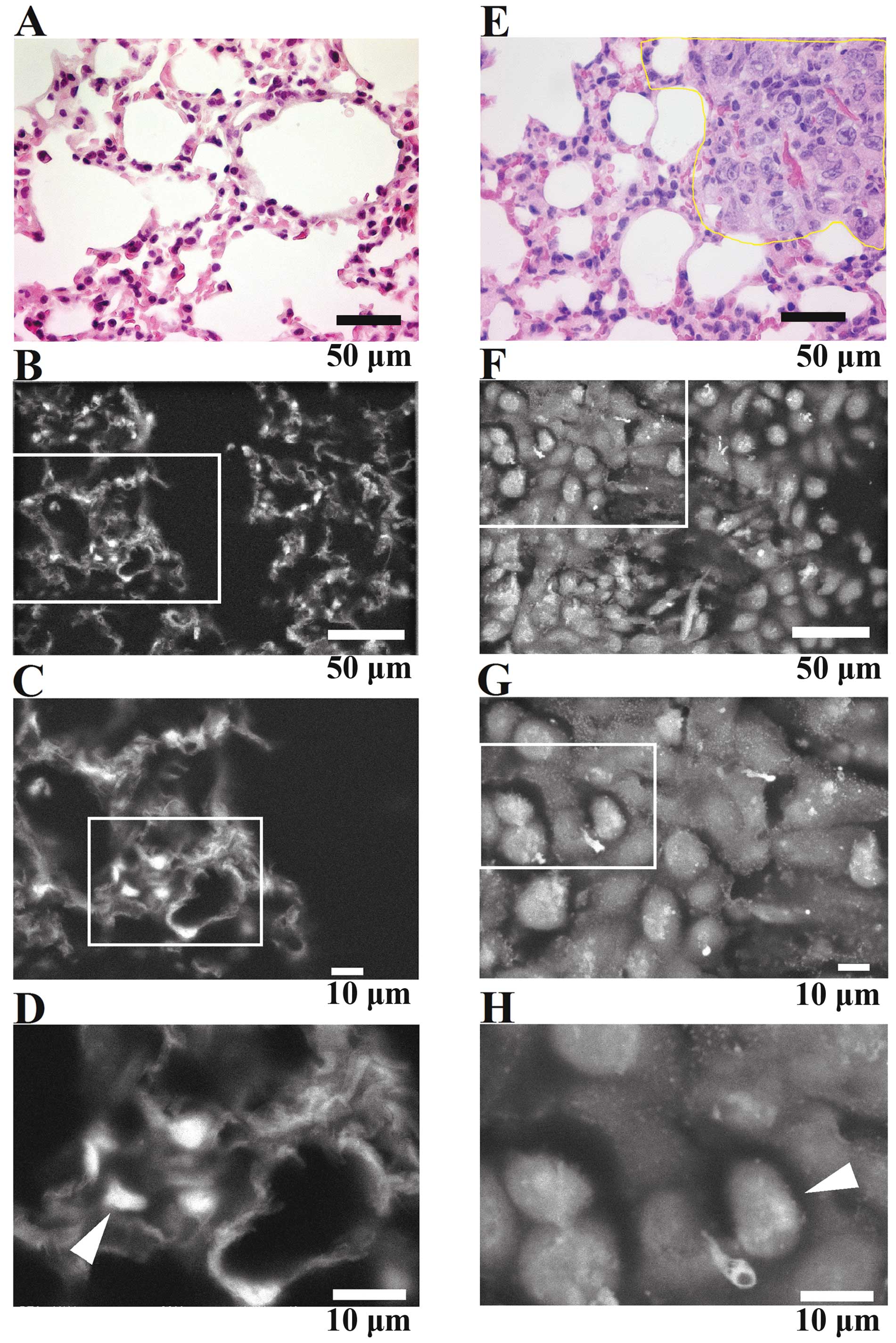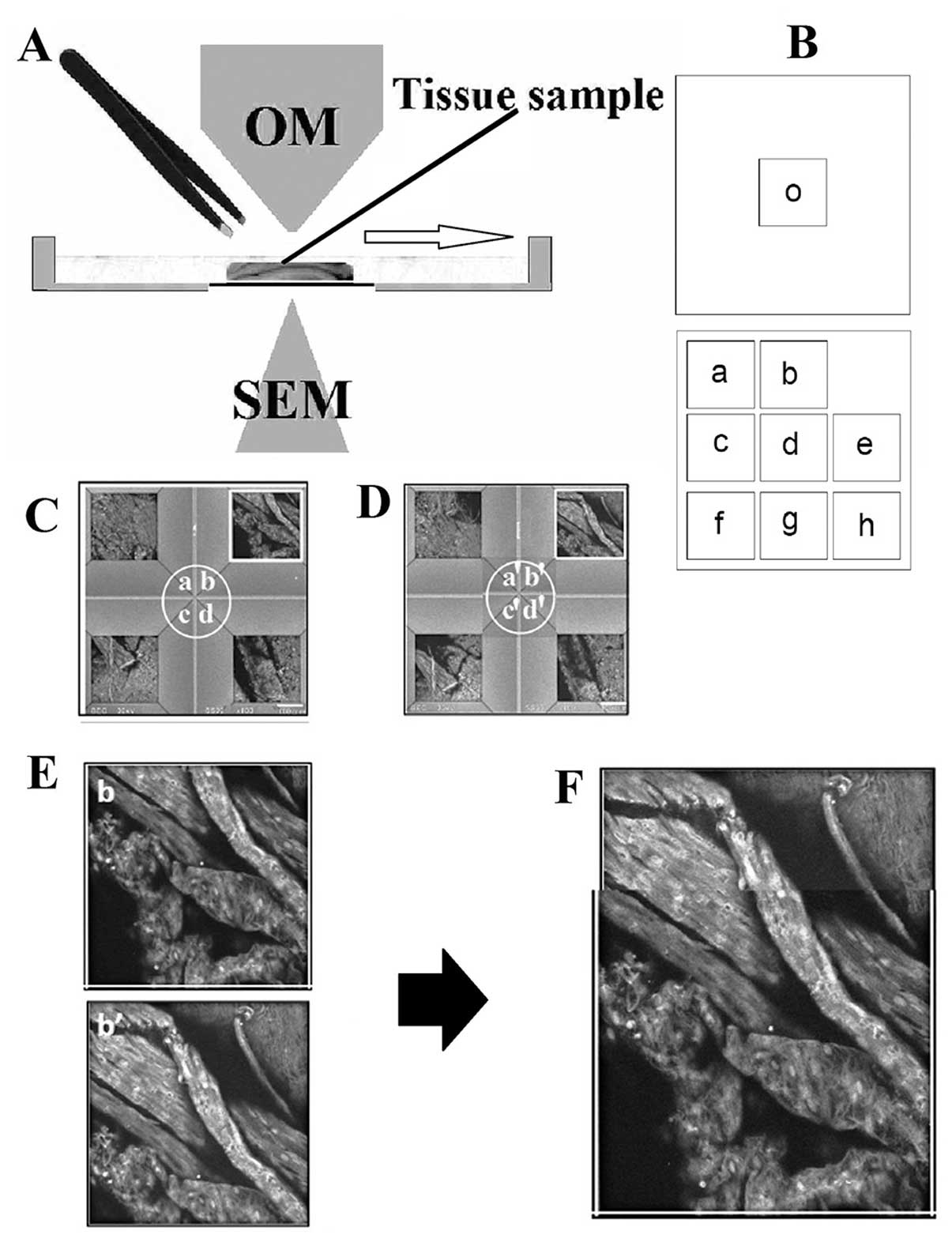|
1
|
Golgi C: Intorno alla struttura delle
cellule nervose. Bollettino della Società Medico-Chirurgica di
Pavia. 13:1–14. 1898.(In Italian).
|
|
2
|
Hell SW: Far-field optical nanoscopy.
Science. 316:1153–1158. 2007. View Article : Google Scholar : PubMed/NCBI
|
|
3
|
Wilson LB: A method for the rapid
preparation of fresh tissues for the microscope. JAMA. 45:17371905.
View Article : Google Scholar
|
|
4
|
Ferreiro JA, Myers JL and Bostwick DG:
Accuracy of frozen section diagnosis in surgical pathology: review
of a 1-year experience with 24,880 cases at Mayo Clinic Rochester.
Mayo Clin Proc. 70:1137–1141. 1995. View Article : Google Scholar : PubMed/NCBI
|
|
5
|
Thiberge S, Nechushtan A, Sprinzak D, et
al: Scanning electron microscopy of cells and tissues under fully
hydrated conditions. Proc Natl Acad Sci USA. 101:3346–3351. 2004.
View Article : Google Scholar : PubMed/NCBI
|
|
6
|
Nyska A, Cummings CA, Vainshtein A, et al:
Electron microscopy of wet tissues: a case study in renal
pathology. Toxicol Pathol. 32:357–363. 2004. View Article : Google Scholar : PubMed/NCBI
|
|
7
|
Barshack I, Polak-Charcon S, Behar V, et
al: Wet SEM: a novel method for rapid diagnosis of brain tumors.
Ultrastruct Pathol. 28:255–260. 2004. View Article : Google Scholar
|
|
8
|
Behar V: Applications of a novel SEM
technique for the analysis of hydrated samples. Microsc Microanal.
19:21–23. 2005.
|
|
9
|
Kristt D and Nyska A: The wet tissue SEM -
a new technology with applications in drug development and safety.
J Toxicol Pathol. 20:1–11. 2007. View
Article : Google Scholar
|
|
10
|
Barshack I, Kopolovic J, Chowers Y, et al:
A novel method for ‘wet’ SEM. Ultrastruct Pathol. 28:29–31. 2004.
View Article : Google Scholar : PubMed/NCBI
|
|
11
|
Nishiyama H, Suga M, Ogura T, Maruyama Y,
Koizumi M, Mio K, Kitamura S and Sato C: Atmospheric scanning
electron microscope observes cells and tissues in open medium
through silicon nitride film. J Struct Biol. 172:191–202. 2010.
View Article : Google Scholar : PubMed/NCBI
|
|
12
|
Maruyama Y, Ebihara T, Nishiyama H, Suga M
and Sato C: Immuno EM-OM correlative microscopy in solution by
atmospheric scanning electron microscopy (ASEM). J Struct Biol.
180:259–270. 2012. View Article : Google Scholar : PubMed/NCBI
|
|
13
|
Suga M, Nishiyama H, Ebihara T, Ogura T
and Sato C: Atmospheric electron microscope: limits of observable
depth. Microsc Microanal. 15:924–925. 2009. View Article : Google Scholar
|
|
14
|
Hirano K, Kinoshita T, Uemura T, Motohashi
H, Watanabe Y, Ebihara T, Nishiyama H, Sato M, Suga M, Maruyama Y,
Tsuji NM, Yamamoto M, Nishihara S and Sato C: Electron microscopy
of primary cell cultures in solution and correlative optical
microscopy using ASEM. Ultramicroscopy. 143:52–66. 2014. View Article : Google Scholar
|
|
15
|
Kinoshita T, Mori Y, Hirano K, Sugimoto S,
Okuda K, Matsumoto S, Namiki T, Ebihara T, Kawata M, Nishiyama H,
Sato M, Suga M, Higashiyama K, Sonomoto K, Mizunoe Y, Nishihara S
and Sato C: Immuno-electron microscopy of primary cell cultures
from genetically modified animals in liquid by atmospheric scanning
electron microscopy. Microsc Microanal. 20:469–483. 2014.
View Article : Google Scholar : PubMed/NCBI
|
|
16
|
Sato C: Atmospheric scanning electron
microscopy (ASEM) realizes direct EM-OM linkage in solution:
aqueous immunocytochemistry. JEOLnews. 46:17–22. 2011.
|
|
17
|
Sato C, Manaka S, Nakane D, Nishiyama H,
Suga M, Nishizaka T, Miyata M and Maruyama Y: Rapid imaging of
mycoplasma in solution using atmospheric scanning electron
microscopy (ASEM). Biochem Biophys Res Commun. 417:1213–1218. 2012.
View Article : Google Scholar : PubMed/NCBI
|
|
18
|
Maruyama Y, Ebihara T, Nishiyama H,
Konyuba Y, Senda M, Numaga-Tomita T, Senda T, Suga M and Sato C:
Direct observation of protein microcrystals in crystallization
buffer by atmospheric scanning electron microscopy. Int J Mol Sci.
13:10553–10567. 2012. View Article : Google Scholar : PubMed/NCBI
|
|
19
|
Akita M, Tanaka K, Murai N, Matsumoto S,
Fujita K, Takaki T and Nishiyama H: Detection of CD133 (prominin-1)
in a human hepatoblastoma cell line (HuH-6 clone 5). Microsc Res
Tech. 76:844–852. 2013. View Article : Google Scholar : PubMed/NCBI
|
|
20
|
Murai T, Maruyama Y, Mio K, Nishiyama H,
Suga M and Sato C: Low cholesterol triggers membrane
microdomain-dependent CD44 shedding and suppresses tumor cell
migration. J Biol Chem. 286:1999–2007. 2011. View Article : Google Scholar :
|
|
21
|
Sakai H, Furihata M, Matsuda C, et al:
Augmented autocrine bone morphogenic protein (BMP) 7 signaling
increases the metastatic potential of mouse breast cancer cells.
Clin Exp Metastasis. 29:327–338. 2012. View Article : Google Scholar : PubMed/NCBI
|
|
22
|
Takahashi M, Furihata M, Akimitsu N, et
al: A highly bone marrow metastatic murine breast cancer model
established through in vivo selection exhibits enhanced
anchorage-independent growth and cell migration mediated by ICAM-1.
Clin Exp Metastasis. 25:517–529. 2008. View Article : Google Scholar : PubMed/NCBI
|
|
23
|
Takahashi M, Miyazaki H, Furihata M, et
al: Chemokine CCL2/MCP-1 negatively regulates metastasis in a
highly bone marrow-metastatic mouse breast cancer model. Clin Exp
Metastasis. 26:817–828. 2009. View Article : Google Scholar : PubMed/NCBI
|
|
24
|
Gage GJ, Kipke DR and Shain W: Whole
animal perfusion fixation for rodents. J Vis Exp.
65:35642012.PubMed/NCBI
|
|
25
|
Deerinck TJ, Bushong EA, Thor A and
Ellisman MH: NCMIR methods for 3D EM: a new protocol for
preparation of biological specimens for serial blockage scanning
electron microscopy. Microscopy. pp. 6–8. 2010, Available at:
http://ncmir.ucsd.edu/sbfsem-protocol.pdf.
|
|
26
|
Suga M, Nishiyama H, Konyuba Y, Iwamatsu
S, Watanabe Y, Yoshiura C, Ueda T and Sato C: The atmospheric
scanning electron microscope with open sample space observes
dynamic phenomena in liquid or gas. Ultramicroscopy. 111:1650–1658.
2011. View Article : Google Scholar : PubMed/NCBI
|
|
27
|
Gahwiler BH: Organotypic monolayer
cultures of nervous tissue. J Neurosci Methods. 4:329–342. 1981.
View Article : Google Scholar : PubMed/NCBI
|
|
28
|
Gähwiler BH, Capogna M, Debanne D,
McKinney RA and Thompson SM: Organotypic slice cultures: a
technique has come of age. Trends Neurosci. 20:471–477. 1997.
View Article : Google Scholar : PubMed/NCBI
|
|
29
|
Nishiyama H, Koizumi M, Ogawa K, Kitamura
S, Konyuba Y, Watanabe Y, Ohbayashi N, Fukuda M, Suga M and Sato C:
Atmospheric scanning electron microscope system with an open sample
chamber: Configuration and applications. Ultramicroscopy.
147:86–97. 2014. View Article : Google Scholar : PubMed/NCBI
|
|
30
|
Amann K and Haas CS: What you should know
about the work-up of a renal biopsy. Nephrol Dial Transplant.
21:1157–1161. 2006. View Article : Google Scholar : PubMed/NCBI
|
|
31
|
Mochizuki S, Moriya T, Naganuma H, et al:
Significance of fat stains in serial sections from Epon-embedded
tissue samples for electron microscopy in renal diseases. Clin Exp
Nephrol. 5:240–245. 2001. View Article : Google Scholar
|















